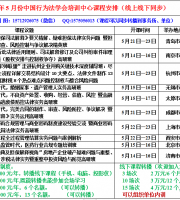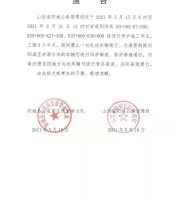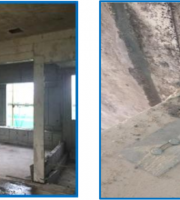21.
33.
7.
Is the stirrup inside or outside the beam column protective layer? A: inside.
36.
What does LLE mean? How many buckles shall be bound within the overlapping range? Answer: the lap length shall not be less than 3 buckles.
1.
For 25% area percentage, how many bars are allowed to be connected in the same section? Answer: two.
17.
What is the hook length of stirrup? Answer: the straight part after bending.
What role does the stirrup play in the beam? Answer: it plays the role of fixing and restricting the longitudinal reinforcement and bearing part of the shear force.
18.
29.
25.
How to calculate the overlapping side length of composite inner stirrup? Answer: the section size is reduced by 2 times the protective layer, then 2 times the longitudinal bar radius, divided by the number of longitudinal bar grids, multiplied by the number of longitudinal bar grids contained in the inner hoop, plus 2 times the longitudinal bar radius, and finally the molding adjustment value must be added.
At ordinary times, what kind of reinforcement does the main beam and secondary beam dodge? Answer: if it is not indicated in the drawing, all the upper bars of the main beam should yield, and the stirrups of the main beam should follow the yield to reduce the height of the vertical side by one diameter of the upper bars of the secondary beam.
How to measure the size of stirrup? Answer: measure the ruler vertically inside the two parallel sides.
22.
31.
26.
10.
What is the bending radius of stirrup? Answer: not less than 2D.
What are the regulations for the stirrup densification zone of the first-class seismic frame beam? Answer: twice the beam height.
What will happen if the bending radius of stirrup is too large? Answer: reduce the effective height and width of components and affect the quality of buildings.
24.
You can also view page 56 of 16g101-1; 4.
13.
Code for design of concrete structures GB50010 has detailed instructions.
In class I environment, the thickness of beam protective layer is 20mm, in class II a environment, the thickness of beam protective layer is 25mm, in class II B environment, the thickness of beam protective layer is 35mm, in class III a environment, the thickness of beam protective layer is 40mm, in class III B environment, the thickness of beam protective layer is 50mm.
How to calculate the length of the second row of reinforcement on the middle support of the beam? Answer: take a quarter of the larger clear span on both sides multiplied by 2, plus the width of the middle support.
What angle is the stirrup hook specified? Answer: 135 degrees.
How to use stirrups to reinforce the pre bound beam skeleton? Answer: pull the stirrup into a spiral shape and insert it into the skeleton core for binding and fixation, with a spacing of about 2 meters.
When one side of the beam is flush with the side of the column, what kind of reinforcement is there to avoid? Answer: the longitudinal reinforcement in the beam close to the column up and down avoids, and the beam stirrup follows to avoid the diameter of a column longitudinal reinforcement that shortens the horizontal side length.
What does Lae mean? What is it usually called? Answer: the anti-seismic anchorage length is usually called the straight anchor length.
But the state has no regulations, which is a pity.
The thickness of concrete protective layer of longitudinal reinforcement of frame beam is not necessarily 25, which varies according to its environmental category.
6.
What is the reinforcement protective layer? Answer: the distance from the outer edge of the stressed reinforcement to the concrete surface.
8.
32.
2.
9.
Where can the upper full-length reinforcement of the beam be connected? Answer: in the middle of one third of the net span of the beam.
20.
How many millimeters is the spacing between stirrups? Answer: 100 mm.
37.
5.
What are the regulations for stirrup densification zone of grade III and IV seismic frame beam? Answer: 1.5 times the beam height.
Source: if there is infringement on the network, please contact to delete the Reference Atlas: 16g101-1, -2, -3 and 18g901-1, -2, -3 and other relevant specifications.
What is the ordinary double spacing of stirrups? Answer: @100/20019.
How long are the two rows of bars on the end support of the beam extended into the clear span? A: a quarter of the net span.
30.
Is the stirrup size reasonable according to the outsourcing or the lining? Why? A: it’s reasonable to calculate by lining, because it’s troublesome and troublesome to calculate by outsourcing and add stirrup diameter.
What are the correction factors? Answer: 1.2; 1.4; 1.6 there are three kinds.
What is the relationship between anchorage length and lap length? A: multiply by the correction coefficient, which is the linkage relationship.
23.
How long is a row of reinforcement on the end support of the beam extended into the clear span? Answer: one third of the net span.
12.
Where is the hook of beam stirrup generally facing? Answer: upward, mainly towards the non tensile side, towards the side containing the concrete slab.
14.
The protective layer of reinforcement is the distance from the outer edge of the outermost reinforcement to the concrete surface.
35.
What does the percentage of 50% reinforcement overlapping area mean? Answer: half overlap and half no overlap.
How many millimeters should the protective layer of the longitudinal reinforcement of the frame beam be? A: it should be 30mm instead of 25mm.
In addition, when the concrete strength grade is not greater than 25, the thickness of protective layer should be increased by 5mm.
The hooks of column stirrups are all on one corner, right? Answer: No, the four corners should be staggered.
The distance from the outer edge of the outermost reinforcement to the concrete surface.
15.
Under what circumstances is the hook of the beam stirrup downward? Answer: when the upper inverted beam and the plate is at the lower part of the beam.
34.
16.
11.
What is the hook length of stirrup? Answer: 5D for non seismic; Seismic or torsional resistance 10d and 75mm larger.
28.
Where is the upper corner reinforcement of the beam marked with the flat method? Answer: at the centralized mark.
27.
How to calculate the length of a row of reinforcement on the middle support of the beam? Answer: take one third of the larger clear span on both sides multiplied by 2, plus the width of the middle support.
38.
Where is the longitudinal reinforcement at the lower part of the beam allowed to be connected? Answer: it is at the lower quarter of the beam and close to the support..
Why is it that the protective layer of the longitudinal reinforcement of the frame beam is specified as 25mm instead of 30mm? Answer: because the frame column bears pressure and the frame beam bears tension, too small the protective layer will reduce the effective height of the beam and reduce the stress performance of the longitudinal reinforcement of the beam.
What is the upper corner bar of the beam called? Answer: through reinforcement or full-length reinforcement on the upper part of the beam.
3.
Fixing Socket Cross Hole Nail Plate
What was the name of the reinforcement on the support of the beam before? Answer: shoulder bar or negative bending moment bar.



